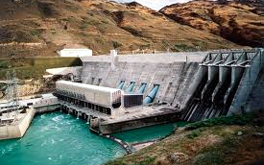Technology roadmap for hydropower

This technology road map for hydropower by IEA details action needed from policy makers to allow hydroelectric production to double, and addresses necessary conditions, including resolving environmental issues and gaining public acceptance.
Hydropower could double its contribution by 2050, reaching 2000 GW of global capacity and over 7 000 TWh. This achievement, driven primarily by the quest of clean electricity, could prevent annual emissions of up to 3 billion tonnes of CO2 from fossil-fuel plants. The bulk of this growth would come from large plants in emerging economies and developing countries. Hydroelectricity’s many advantages include reliability, proven technology, large storage capacity, and very low operating and maintenance costs. Hydropower is highly flexible, a precious asset for electricity network operators, especially given rapid expansion of variable generation from other renewable energy technologies such as wind power and photovoltaics. Many hydropower plants also provide flood control, irrigation, navigation and freshwater supply. The technology road map for Hydropower details action needed from policy makers to allow hydroelectric production to double, and addresses necessary conditions, including resolving environmental issues and gaining public acceptance.
See Also
Report: BP statistical review of world energy 2012.
Report: World energy outlook 2011.
News: Reservoirs losing capacity.
Feature: Alaknanda-Badrinath project challenged in green tribunal.
Report: Hydropower in the CDM.
Report: Directions in hydropower.
Report: Hydropower development in India - a sector assessment.
Report: Taking a holistic approach to planning and developing hydropower.
